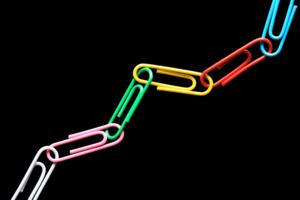Parents
/Home & Leisure

Lori Borgman: Kids pray the darndest things
We had a good-size crowd together this week. Three out-of-town grands and six grands who live in town, met up for three consecutive days. We rotated from house to house to house so that no one house would be singled out as a disaster area.
Due to the size, volume and rapid movement of the group, my intelligence gathering is often limited to ...Read more

Can’t make it to Broadway? Read these books instead!
If you can’t swing a trip to the Big Apple (or even your local community theater), don’t fret.
We’ve got the next best thing, and let me tell you, these books deliver the same vibe as some of Broadway’s buzziest, weirdest and most unforgettable productions.
The People Who Report More Stress by Alejandro Varela
(If You Wanted to Watch...Read more

Healing through nature: 'Period Fix' empowers women to take control of their menstrual health
Too often, period-related issues are shrugged off or treated with one-size-fits-all solutions, leaving women feeling frustrated and unheard. Heidi Moretti’s mission is to change that narrative. In "Period Fix," she asserts that women have far more options to address period problems than simply taking synthetic hormones or “putting up with it...Read more

A powerful, human story of grief and grace in the aftermath of war
Only a small fraction of Americans know what it’s truly like to fight a war and live with its aftermath. Les Carroll’s novel "This Troubled Ground" bridges that gap by taking readers from the somber, cold tarmac of Dover Air Force Base to the battle-scarred landscapes of Afghanistan.
Inspired by true events from Carroll’s own military ...Read more

Lori Borgman: Water tumblers salute Gulp of America
Hydration has officially become the cure for whatever ails us.
Feeling sluggish? Hydrate! Dry skin? Hydrate! Joints hurt? Hydrate! High blood pressure? Hydrate! Ingrown toenail? Hydrate! Don’t know what to make for dinner? Hydrate!
To join the wave of adequate hydration, one of our daughters thoughtfully gifted me with a pink XXL insulated ...Read more

Former military pilots coauthor nail-biting ride through international terrorism
"Night of the Bear" by Alan Cockrell and Richard Hess is a suspenseful tale of revenge and military aggression, reminiscent of Tom Clancy’s earliest Cold War thrillers. A covert meeting off the coast of Long Island between Russian Intelligence and a highly placed asset, with links to the highest levels of the U.S. government, discusses a ...Read more

Experience the divine in unique blend of scripture and personal revelation
A unique spiritual guide for Christians that blends Scripture and personal revelation is the focus of "I Am: the First and the Last" by Delon Jackson.
In this intimate look at the wonders and mysteries of God, the Bible and the nature of Heaven, Jackson meditates on a wide variety of Christian precepts and doctrine, all with a distinctly ...Read more

6 books that will ruin your summer
Ah, summertime. When the living is easy. Kids out of school, family vacations in full swing, honeymoons and girl trips galore.
Perhaps you are reading this as you dig your toes into white sand, or you’re currently curled up by the campfire after a long day of hiking and barbecues. Lucky. I could be achieving a summer glow and sipping ...Read more

Lori Borgman: Holding tight one paper clip at a time
The man of the house is tall, lean and so bald that his head shines almost as much as his smile. He worked law enforcement all his career. As a state trooper, he once rescued the Beatles from crazed fans after a St. Louis concert.
He worked for the federal government as well, something to do with organized crime and exploding body parts. I don�...Read more

How modern research and fiction illuminate family legacy
Family legacy has long captivated our imagination, whether in the form of domestic thrillers like "The Family Upstairs' by Lisa Jewell; classic stage plays like Shakespeare’s "Hamlet"; sweeping historical epics like Jeffrey Eugenides’s "Middlesex"; or intimate personal narratives like Louisa May Alcott’s "Little Women." From hidden ...Read more

Latest Maxx King thriller is a gripping mix of the geopolitical and extraterrestrial
In "Falling Angels," the third book in the Maxx King Thriller series, John H. Thomas pushes his high-octane storytelling to its most ambitious scale yet. The action opens in the chaos of Operation Anaconda, where elite operative Maxx King is betrayed, wounded and left for dead in the mountains of Afghanistan. As Maxx regroups with a Green Beret ...Read more

Paradise meets peril in a bold espionage debut
Introducing Donovan Cross, a seasoned secret agent whose latest mission takes him home after three decades away — but this is no peaceful return. Instead, it’s the spark that ignites a tense, high-stakes thriller filled with political intrigue, buried secrets, and personal reckoning. With its smart pacing, vivid setting, and complex ...Read more

Lori Borgman: How a hot grandma became a cool grandma
When I was a kid, we didn’t have air conditioning until we moved from Nebraska to Missouri. People in Nebraska used open windows and fans to cool a house back in the day.
My Aunt Adeline, a resourceful woman, cooled a big house, a husband and six kids with nothing but a bowl of ice in front of a window fan. That was the Cornhusker version of ...Read more

Haunting contemporary gothic blurs the line between fantasy and reality
Have you ever read a book that you wished would never end? That’s the kind of book "The Island" is, and it’s a rare find.
Written by Amazon bestselling author and filmmaker Kerri King, this speculative fiction novel follows the emotional journey of Mack, a novelist-turned-fisherman, whose sailing trip with his wife, Lily, takes an ...Read more

5 game-changing books shaping the future of medicine
The American health care system stands at a crossroads — fragmented, costly and often failing the very people it aims to serve. Yet across hospitals, tech startups, policy labs and patient advocacy groups, a new wave of reformers is reshaping the future of medicine.
These five books offer critical insights into how we can build a more ...Read more

Hidden identities and global conspiracies revealed in dark thriller
A shadowy elite plan to enslave the world will succeed if good people do nothing … but in J.H. Jones’ ambitious and imaginative "Rogue Unit: Awakening," there are still a few good men and women willing to fight back.
David Smith, an Office of Naval Intelligence investigator posing as an accountant for the U.S. Department of Agriculture, and...Read more

Debra-Lynn B. Hook: Childhood and the secret of the creek
It is nearing twilight, and I have come home to stand at the edge of the woods.
My ears at first can only pick up the chirping of crickets and tree frogs in the still of the South Carolina summer evening.
But then, daring to move in closer, I hear what I came for, the sweet trickle of the little creek that winds its way behind the woods and ...Read more

Lori Borgman: First words may now include 'charge it!'
Parents are giving credit cards to children so young that some of them aren’t able to make their own beds or cross the street alone. These newly minted cardholders are buckled into car seats whenever they travel and wear water wings at the pool but have credit cards linked to their parents’ account.
One mother said she and her husband added...Read more

A grumpy-sunshine, nerdy-steamy romance you didn’t know you needed
Romance authors have such huge and wonderful imaginations. If anyone thinks that because romance has a formula that it’s boring, you couldn’t be more wrong. And with all of the hockey romance that’s out there, you would think that because it’s so niche, that there couldn’t be a different take on the subgenre. That’s where you’re ...Read more

A feminist coming-of-age that’s quiet, powerful and unforgettable
Marianna Marlowe’s "Portrait of a Feminist" isn’t your typical feminist memoir. It doesn’t shout its message or come armed with statistics and slogans. Instead, it invites you into the quiet, powerful moments that shaped one woman’s identity across years, continents and cultures. Told in a series of beautifully written personal essays ...Read more








